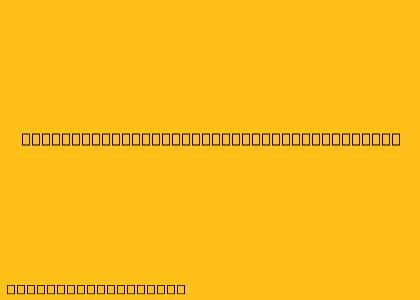A Complete Guide to Writing a Professional Letter in English
Writing a professional letter in English can be daunting, but with a little guidance, you can craft a clear, concise, and impactful message. Here's a comprehensive guide to help you get started:
Understanding the Structure
A professional letter in English typically follows a standard format:
1. Heading:
- Your Name: Your full name, printed clearly.
- Your Address: Include your street address, city, state, and zip code.
- Your Phone Number: Use your primary phone number, including area code.
- Your Email Address: This is essential for future communication.
- Date: Write the full date in the format: Month Day, Year (e.g., January 15, 2024).
2. Inside Address:
- Recipient's Name: Use the recipient's full name and title (e.g., Mr./Ms./Dr. John Doe, Marketing Manager).
- Recipient's Company: The full name of the company or organization.
- Recipient's Address: Include their street address, city, state, and zip code.
3. Salutation:
- Formal: "Dear Mr./Ms./Dr. [Recipient's Last Name],"
- Informal: "Dear [Recipient's First Name],"
4. Body:
- Introduction: Begin with a clear and concise statement of purpose, explaining the reason for writing the letter.
- Supporting Paragraphs: Develop the main points of your letter, providing specific details and supporting evidence.
- Conclusion: Summarize your request or main point and express your appreciation for their time and consideration.
5. Closing:
- Formal: "Sincerely," "Respectfully," "Yours faithfully,"
- Informal: "Best regards," "Kind regards," "Warm regards,"
6. Signature:
- Sign your full name in ink above your typed name.
7. Enclosure:
- If you're sending any additional documents, indicate this with "Enclosure(s):" followed by a list of enclosed materials.
Key Elements of a Professional Letter
1. Professional Tone:
- Use formal language and avoid slang or informal expressions.
- Maintain a respectful and polite tone throughout the letter.
2. Clarity and Conciseness:
- Structure your letter logically, using clear and concise language.
- Get to the point quickly and avoid unnecessary details.
3. Accuracy and Proofreading:
- Double-check your letter for any factual errors or typos.
- Proofread your letter carefully before sending it.
Example Letter: Requesting Information
[Your Name] [Your Address] [Your Phone Number] [Your Email Address] January 15, 2024
[Recipient's Name] [Recipient's Title] [Recipient's Company] [Recipient's Address]
Dear Mr./Ms. [Recipient's Last Name],
I am writing to inquire about [briefly state your reason for writing]. I am particularly interested in [mention specific information you are seeking].
I would appreciate it if you could provide me with [state your request, e.g., brochures, information about your services, etc.]. I am available to discuss this further at your earliest convenience.
Thank you for your time and consideration.
Sincerely, [Your Name]
Additional Tips
- Use a professional letterhead: A letterhead with your contact information can enhance the professionalism of your letter.
- Choose the appropriate format: You can choose between a block format (all text aligned to the left margin) or a semi-block format (indent the first line of each paragraph).
- Use high-quality paper: Choose a white or off-white paper that is free of imperfections.
- Send your letter professionally: Use a standard envelope and address it clearly.
By following these guidelines, you can create professional and impactful letters that will make a positive impression on your recipients.
